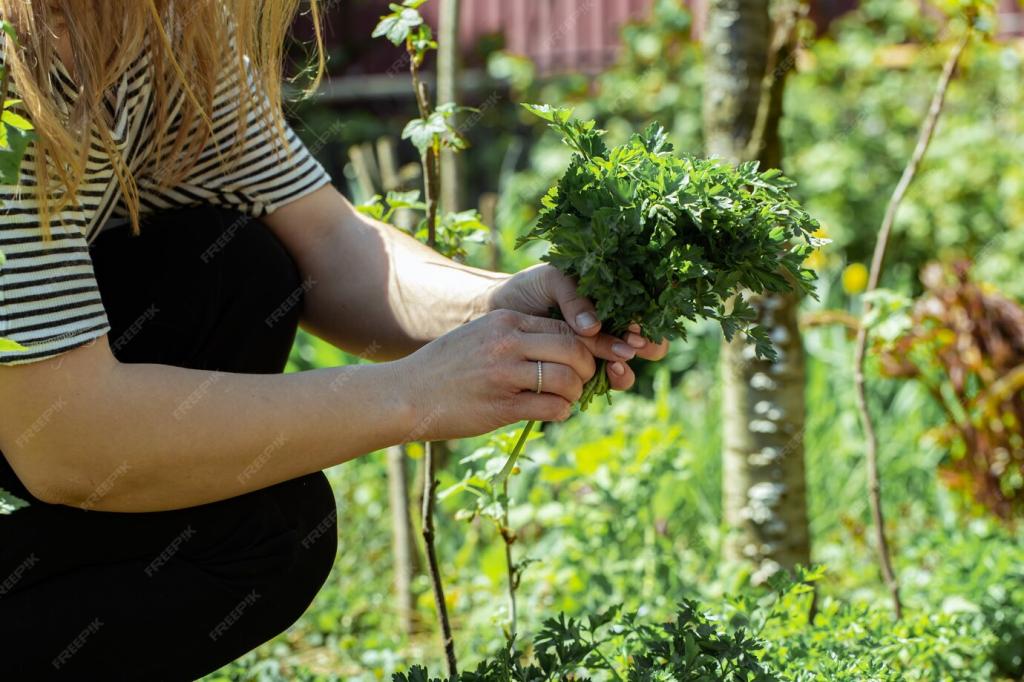
DIY Compost Bins for Kitchen Waste: Turn Everyday Scraps into Living Soil
Chosen theme: DIY Compost Bins for Kitchen Waste. Welcome to a friendly, practical guide for building compact, odor-free compost solutions that fit right into your kitchen routine. Learn simple builds, smart habits, and real stories—then subscribe to follow along.
Composting Kitchen Waste at Home: Why It Matters
From Trash to Treasure
Kitchen scraps tossed into landfills generate methane, a potent greenhouse gas. In a DIY compost bin, those same peels and coffee grounds transform into nutrient-rich compost that feeds herbs, houseplants, and garden beds. Share your first-scrap story below.
Microbial Magic in a Small Bin
Your bin becomes a tiny ecosystem where microbes and, sometimes, worms break down scraps efficiently. With proper airflow, carbon-rich browns, and kitchen greens, decomposition stays clean and quick. Subscribe for weekly micro-tips to keep your bin thriving.
Climate Action on a Countertop
A compact bin helps you track waste, reduce plastic bag use, and cut emissions from trash collection. It’s quiet climate action you can start today. Tell us your city, and we’ll share space-saving ideas tailored to small homes.
Stack two food-grade buckets: the top with holes for airflow, the bottom to catch moisture. It’s inexpensive, discrete, and easy to tuck beside recycling. Bookmark this idea if you want simple maintenance with minimal tools and quick assembly.
Picking Your DIY Compost Bin Design
Food-grade buckets, old storage bins, or lidded containers become perfect compost vessels. Avoid containers that held chemicals. Tight-fitting lids help manage odor and pests. Share a photo of the container you plan to repurpose to inspire fellow readers.
Tools and Materials You Probably Already Own
A drill with small bits, mesh or screen, a few screws, and optional grommets enable airflow while blocking pests. If drilling isn’t possible, consider a container with adjustable vents. Subscribe for our printable template showing ideal hole spacing and sizes.
Tools and Materials You Probably Already Own
Build It: Step-by-Step Two-Bucket Kitchen Compost Bin
Drill 1/4-inch holes around the top bucket’s sides and lid for oxygen, plus a few on the bottom for leachate. Place a mesh screen inside to deter pests. Nest it into the second bucket, which collects moisture cleanly.
Begin with a base of shredded paper or leaves, then add kitchen scraps and cover with browns each time. Aim for roughly three parts browns to one part greens. This balance controls odor, supports microbes, and avoids soggy, compacted layers.
Chop scraps small, add a handful of browns after every deposit, and stir lightly every few days. Moisture should feel like a wrung sponge. If it smells, add more browns. Follow us for a quick weekly checklist you can screenshot.
Troubleshooting Odors, Pests, and Moisture
01
If It Smells, Fix the Balance
Odors usually mean too many wet greens or not enough airflow. Add shredded paper, stir the bin, and check ventilation holes. Avoid meat, dairy, and oily foods. Post your toughest smell scenario, and we’ll reply with tailored adjustments.
02
Fruit Flies and Ants, Begone
Cover every fresh layer with dry browns, keep lids tight, and wipe rims after feeding. A sprinkle of cinnamon can deter ants. Place a mesh screen under the lid. Subscribe for our seasonal pest-proofing checklist and quick, natural remedies.
03
Too Wet or Too Dry
If dripping, add extra browns and mix. If dusty or slow, mist with water and add fresh greens. Aim for steady, gentle moisture. Share your climate and bin location, and we’ll recommend adjustments for humidity or winter conditions.
Curing and Sifting for Smooth Texture
Let your compost rest for a couple of weeks to finish breaking down. Sift through a mesh to remove larger bits. Return chunky pieces to the bin. Comment if you want our easy DIY sifter plan with measurements and material tips.
How to Use Compost Indoors and Outdoors
Blend a small portion into potting mixes, top-dress herbs, or mix into garden beds before planting. Compost improves water retention and soil life. Show us your first harvest photo, and we’ll feature it in our community roundup newsletter.
What Not to Compost in a Kitchen Bin
Skip meat, fish, dairy, oils, and heavily salted foods to prevent odors and pests. Citrus peels are fine in moderation. Keep plastics and glossy paper out. Subscribe to receive a printable do-and-don’t list for quick fridge reference.
Real-Life Stories and Tiny-Kitchen Wins
Maya tucked a two-bucket bin under her sink, fed it coffee grounds and carrot peels, and stopped buying plastic trash bags. Her balcony basil exploded with growth. Share your space constraints, and we’ll suggest a matching compact build.


Real-Life Stories and Tiny-Kitchen Wins
Ethan set a simple rotation: one person chops scraps, another adds browns, everyone stirs on Sundays. The odor vanished, and roommates fought less about cleaning. Comment with your household plan, and we’ll compile the best tips for subscribers.
